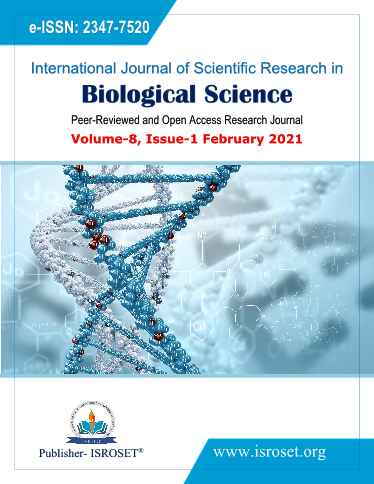Study on Biomedical Waste Management in Surgical Theaters of Some Selected Hospitals in Urban Kano, Northern Nigeria
Keywords:
Biomedical waste, Urban Kano, environmental pollution, healthcare workers, waste managementAbstract
Biomedical waste management (BMW) is one very important aspect of environmental issue that needs to be taken more seriously. Rapid growth of human population especially in the developing countries has led to increase in quantity of biomedical waste produced in the health care facilities (HCF). The paper aimed at studying management of MW in surgical theaters in Urban Kano. A total of twelve (12) of HCFs were purposively sampled base on possession of a functioning theater, from the six major local government areas constituting urban Kano (one public and the other private). Questionnaire survey was used to solicit information from the theater attendants on various aspects of waste management: waste segregation, collection, storage, treatment, transportation, disposal, safety and exposure to risk as well as training. Out of 105 questionnaires administered, 81 representing 77% were retrieved. It was found out that waste segregation is poorly practiced, (26%), waste is poorly stored, treatment also very low, reported by only 29% and sharps especially syringes are disposed up anyhow, although some form of incineration was reported (29%). Final disposal of the waste is often in open dumpsites. Training was reported, (64%) that generally focused more on personal safety rather than medical waste management. Infectious waste generated ranges from 0.07kg/day to 3.60kg/day, among public hospitals. Noninfectious waste generated ranges from 0.82kg/day to 1.6kg/day. Infectious wastes generated among private hospitals ranges from 0.22kg/day to 2.57kg/day while noninfectious waste generated ranges from 0.0kg/day to 1.10kg/day. Of the average total generated waste produced, 18.0kg/day, public hospitals accounted for about 11.8kg/day while private hospitals accounted for 6.20kg/day. The result indicated that the management of biomedical waste is poorly executed, hence it was recommended that strategic measures should take to reduce the quantity of the waste produced, which may be achieved full segregation of the wastes and implementation of National Health Care Waste Management Plan (NHCWMP, 2007) in order to reverse the situation.
References
A. Pruss, E. Giroult, P. Rushbrook, “Safe management of wastes from healthcare, activities” Geneva: World Health Organization, 1999.
E. Shinee, E. Gombojav, A. Nishimura, N. Hamajima, K. Ito, “A study on generation of biomedical waste” Management, Vol. 28, pp. 435-441, 2008.
G. V. Patil, K. Pokhrel, “Biomedical solid Waste Management in an Indian hospital: a case study” Waste Management, Vol. 25, pp. 592-599, 2005.
Z. Bendjoudi, F. Taleb, F. Abdelmalek, A. Addou, (2009). “Healthcare waste management in Algeria and Mostaganem department” Waste Management, Vol. 29: pp. 1383-1387, 2009.
S. V. Manyele, H. Anicetus, M. H. Bilia, “Globalization and its Effects on medical waste management in Tanzania” IET Annual Conference and General Meeting, 4th-5th December, 2003, AICC Arusha, Tanzania, 2003.
E. O. Longe, A. Williams, “A preliminary study on medical waste management in Lagos Metropolis, Nigeria” Iranian Journal of Environmental Health Sciences and Engineering, Vol. 3, Issue 3, pp. 1333-139, 2006.
M. Ahmed, “Creating a GIS application for local health care planning in Kano metropolis” An Unpublished PGD GIS/Remote Sensing Thesis, Submitted to the Department of Geography Ahmadu Bello University, Zaria, 2010.
U. A. Kibon, M. Ahmed, “Distribution of Primary Health Care Facilities in Kano Metropolis Using GIS (Geographic Information System)” Research Journal of Environmental and Earth Sciences, Vol. 5, Issue 4, pp. 167-176, 2013.
WHO, “Management of Solid Health Care Waste at Primary Health – Care Centers, a Decision-Making Guide” Geneva, 2005.
Z. Kheradpisheh, M. Salehii, “Medical waste production at obstetrics and gynecology Hospital in south of Iran” Journal of Environmental Technology and Sanitation” Vol. 3, Issue 1, pp. 49-54, 2013.
R. K. Rampal, K. Jatinder, J. Reeti, “Solid waste generation in government hospitals of Jammu City, India” Pollution Research, Vol. 21, pp. 39-43, 2002.
K. P. Pudussery, “A study on the medical waste management at the Norfolk and Norwich university hospital” An unpublished Msc thesis submitted to School of Environmental Sciences, University of East Anglia, 2011.
A. B. Umar, M. N. Yahaya, “Hospital Waste Management Practices: A Case Study of Primary Health Care Centers, In Fagge Local Government Area, Kano State” Journal of Nursing and Health Science, Vol. 3, Issue 6, pp. 26-33, 2014.
M. R. Glenn, R. Gadwal, “Clinical waste in Developing Countries, an analysis with a Case study of India, and a Critique of the Basle TWG Guidelines, 1999.
ICRC, “Medical Waste Management” Available at http//www.icrc.org retrieved 26/08/2015, 2011.
D. N. Ogbonna, “Characteristics of waste management practices of medical waste in health care institution in Port Harcourt, Nigeria” Journal of Soil Science and Environmental Management, Vol. 2, Issue 5, pp. 132-141, 2011.
A. Botelho, “The impact of education and training on compliance behaviour and waste generation in European private healthcare facilities” Journal of Environmental Management, Vol. 98, pp. 5-10, 2012.
Y. Y. Babanyara, D. B. Ibrahim, T. Garba, A. G. Bogoro, M. Y. Abubakar, “Poor Medical Waste Management (MWM) Practices and Its Risks to Human Health and the Environment: A Literature Review” International Journal of Environmental, Chemical, Ecological, Geological and Geophysical Engineering, Vol. 7, Issue 11, pp. 516-523, 2013.
N. Akter, “Medical waste management: a review” Environmental Engineering Program, School of Environment, Resources and Development Asian Institute of Technology, Thailand, 2010.
F. Nemathaga, S. Maringa, F. Chimuka, “Hospital solid waste management practices in Limpopo Province, South Africa: A case study of two hospitals” Waste Management, Vol. 28, 1236-1245, 2008.
S. M. Soliman, A. I. Ahmed, “Overview of biomedical waste management in selected Governorates in Egypt: A pilot study” Waste Management, Vol. 27, pp. 1920-1923, 2006.
Downloads
Published
How to Cite
Issue
Section
License

This work is licensed under a Creative Commons Attribution 4.0 International License.
Authors contributing to this journal agree to publish their articles under the Creative Commons Attribution 4.0 International License, allowing third parties to share their work (copy, distribute, transmit) and to adapt it, under the condition that the authors are given credit and that in the event of reuse or distribution, the terms of this license are made clear.







